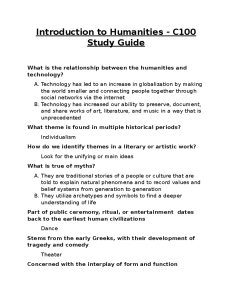Reading like a translator offers a transformative lens through which to approach literature, revealing intricate layers of meaning often overlooked by casual readers. Acclaimed translator Damion Searls emphasizes that this practice merges the art of reading with translation philosophy, providing a unique reading experience that transcends mere word-to-word conversion. Searls suggests that when one engages deeply with the text, they are entering a dialogue with the author’s intentional choices, necessitating an understanding that informs every translation undertaken. By conducting translation workshops, Searls illustrates how translating literature is less about proficiency and more about a profound engagement with language and its structure. In this way, reading like a translator becomes an enriching exploration, cultivating a deeper appreciation for the nuance and craft of literature itself.
Approaching literature through the lens of a translator opens up new avenues of understanding, redefining the reading experience itself. This practice, akin to deciphering the subtleties embedded in language, takes readers beyond the surface of words to appreciate the intricacies of sentence structure and authorial intent. By engaging with texts as translators do, individuals not only enhance their comprehension but also refine their own writing skills. Using insights from figures like Damion Searls, one discovers that the nuances of translation intertwine closely with broader philosophical inquiries about meaning and perception. Such a perspective enriches the practice of reading, making it a dynamic interaction between the reader, the text, and the cultural context surrounding it.
Understanding the Philosophy of Translation
Translation is not simply the mechanical conversion of words from one language to another; it encompasses a deeper comprehension of the nuances and intent behind those words. Damion Searls emphasizes that translation is rooted in a philosophical understanding of the text, where a translator must dive into the psychological and perceptual layers of what they are translating. Drawing inspiration from the writings of Maurice Merleau-Ponty, Searls articulates how the relationship between a translator and the language is akin to the immediate recognition one has with objects in the world. Just as one knows a chair is to be sat upon, translators must instinctively grasp how words convey meaning and emotion, enabling them to recreate that experience for the target audience.
Searls’ approach reflects a broader concept in translation studies that considers translation as an interpretative act shaped by the reader’s experience. He highlights the importance of perception in translation, suggesting that every reading puts the translator’s interpretation at the forefront. By understanding the author’s intentions and the emotional currents within the text, translators can craft a version that resonates with the new audience. This intimate connection is vital to Searls’ philosophy of translation, showcasing the art and deeper thought involved in the craft.
Reading Like a Translator
To “read like a translator” is to engage with a text not just as a reader but as a co-creator of meaning. Damion Searls elucidates that this method involves a meticulous and analytical approach, where one closely examines how language is constructed. He explains that translators must identify which components of the source text are essential to preserving the author’s voice and which elements can be adapted or omitted to enhance clarity in the target language. This intricacy demands that translators are not only fluent in languages but also adept at understanding different cultural contexts and literary devices.
By honing their skills in this way, translators develop a stronger ability to convey the subtleties of the original work. Searls’ example of Uwe Johnson’s technique of using “not this but that” constructions illustrates the need for a thorough examination of the stylistic choices made by authors. Rather than opting for smoothness at the expense of fidelity, translators embracing this reading philosophy can discover layers of meaning that enhance the final translation, preserving the original’s integrity while making it accessible to new audiences.
The Role of Translation Workshops
Translation workshops offer invaluable spaces where aspiring translators can refine their craft, sharing insights and feedback on their work. Searls, during a workshop with Ph.D. students, indicates the importance of collaborative environments in the development of translation skills. Workshops are platforms for exploring diverse translation philosophies and techniques, allowing participants to engage with various literary works while practicing their interpretive strategies. They foster a sense of community where individuals can freely exchange ideas, mistakes, and successes.
Additionally, these workshops can help bridge the gap between theoretical translation concepts and practical application. Participants are encouraged to challenge their preconceptions about translation and explore the multifaceted nature of language. This interactive learning experience not only enhances their technical skills but also deepens their appreciation of the translation process, contributing to the ongoing dialogue about what it means to accurately represent literature across linguistic boundaries.
Searls and the Art of Translation
Damion Searls is not just an accomplished translator but a thinker who has contributed significantly to the discourse on translation. His nuanced understanding of language and its intricacies has led him to translate major figures in literature, including Nobel laureates and iconic authors. Searls’ translations are characterized by their fidelity to the original texts while remaining poetic and accessible to English readers. Through his works, he inspires fellow translators to recognize the balance between literal translation and artistic interpretation.
In addition to his translation work, Searls actively participates in discussions surrounding translation theories, underscoring the notion that translating literature requires more than language proficiency; it requires a philosophical approach. He advocates for the idea that translation is an expressive act, guided by the translator’s intuition and emotional engagement with the text. By intertwining his translation practices with vibrant philosophical discussions, Searls elevates the art of translation, helping others understand its complexity and dynamism.
The Challenges of Translating Literature
Translating literature poses distinctive challenges that go beyond language barriers. One primary obstacle is the cultural context embedded in the original works, which can be difficult to convey in another language. Searls points to the importance of understanding metaphor, idiomatic expressions, and historical references that an author might utilize. These facets can often be lost if a translator is not attentive to the broader implications of a text and its cultural significance.
Moreover, translators grapple with the unique writing styles of different authors, each requiring a tailored approach to capture their voice authentically. Searls emphasizes that maintaining the writer’s stylistic integrity is essential; this can involve arduous decision-making about language and structure. The translator must consistently ask: what is significant to the author’s expression? By addressing these complexities head-on, translators enhance their ability to deliver a version that resonates with the spirit of the original.
Interpreting Authorial Intent
Understanding authorial intent is a significant aspect of the translation process, shaping how a translator approaches a text. Searls argues that recognizing the emotional and thematic undertones behind an author’s words is vital for crafting a faithful translation. He asserts that the translator must not only decode the linguistic elements but also engage with the text’s underlying messages and emotions. This depth of connection ensures that the translation captures the essence of the original work.
Translators often delve into discussions with authors when possible to accurately grasp the nuances they wish to convey. In Searls’ case, conversational exchanges with authors such as Jon Fosse provide insights that are indispensable for the translation process. These collaborations ensure that the translated text reflects the original’s intent, maintaining fidelity to the author’s artistic vision while presenting it in a manner that resonates with the target audience.
The Evolution of Translation
The field of translation is continually evolving, influenced by cultural shifts, technological advancements, and scholarly discourse. Searls highlights that understanding contemporary translation theories and practices is crucial for successful translations in today’s interconnected world. Translators must remain adaptable, embracing new methods and perspectives that emerge from ongoing discussions in translation studies.
Moreover, the rise of digital tools and platforms has transformed how translators access resources and collaborate with peers. This accessibility is reshaping the landscape of literary translation, allowing for greater exchange of ideas and methodologies. As the industry evolves, Searls’ insights remind future translators to stay informed and engaged with both the literary community and the philosophical undercurrents that underpin their work.
The Importance of Literary Translation
Literary translation plays a crucial role in fostering cross-cultural understanding and appreciation of literature. It serves as a bridge, allowing readers from different linguistic backgrounds to access and enjoy works that might otherwise remain confined to their original language. Searls illustrates how translation enriches the literary landscape, inviting new audiences to encounter diverse narratives and perspectives.
By translating literary works, translators contribute to a shared global culture, where voices from various backgrounds can converse through text. This exchange not only promotes empathy but also enhances the richness of literature as a whole. Searls’ work exemplifies the transformative power of literary translation, emphasizing its significance in crafting a more interconnected and enlightened world.
Inspiration from Translation Experiences
Translators often draw inspiration from their own experiences as readers, as well as their interactions with authors and texts. Searls emphasizes the emotional connection he feels toward the works he translates, creating a personal investment in the translation process. This connection can serve as the driving force behind a translator’s choices, influencing how they interpret language and communicate ideas within their translations.
Furthermore, sharing experiences in translation workshops and discussions enriches the translator’s toolkit, equipping them with new methods and ideas. By reflecting on their translations and receiving feedback, translators can refine their techniques and discover creative ways to solve linguistic challenges. Searls’ journey reminds us that the act of translation is as much about personal growth and exploration as it is about linguistic accuracy, inviting translators to continuously evolve in their craft.
Frequently Asked Questions
What does it mean to read like a translator according to Damion Searls?
Reading like a translator involves engaging deeply with the text, much like Damion Searls describes. This means understanding the linguistic and stylistic choices made by the original author and how to convey that meaning in another language. It emphasizes a close reading experience that allows translators to faithfully represent the author’s vision.
How does translation philosophy influence the reading experience in literature?
Translation philosophy, as discussed by Damion Searls, suggests that the act of translating is intrinsically linked to the reading experience. By unpacking the process of reading, one can gain insights into the nuances of translation, acknowledging that it’s not merely about translating words but about conveying meaning and emotion.
What can aspiring translators learn from Damion Searls’ translation workshops?
Damion Searls’ translation workshops focus on developing the skill of reading like a translator. Participants learn how to analyze sentence structures and stylistic choices in source texts, enhancing their ability to provide accurate translations that reflect the author’s intent while adapting to the target language.
Why are there no perfect translations, according to Damion Searls?
Damion Searls argues that there are no perfect translations because each translation represents a unique interpretation of the original text. Just as a reader may envision a character in a specific way, translators bring their own perspectives and experiences to the process, which affects the final product.
How does Damion Searls approach the process of translating literature?
Damion Searls approaches translating literature with a focus on slow and precise first drafts. He often translates as he reads, allowing intuition and sound to guide his revisions while striving to maintain the rhythm and flow of the original text without being overly fixated on the source material.
What role does understanding sentence structure play in reading like a translator?
Understanding sentence structure is crucial in reading like a translator, as highlighted by Damion Searls. It helps translators identify which elements of the source text can be omitted or adapted, ensuring that the essence and intention of the author remain intact while making the text accessible to English readers.
How can I improve my skills to read like a translator?
Improving your skills to read like a translator involves practicing close reading and understanding the nuances of both the source and target languages. Engaging with translation philosophy, such as that presented by Damion Searls, can also provide valuable insights into how to approach texts with the mindset of a translator.
What examples illustrate the importance of cultural context in translating literature?
Damion Searls uses the example of translating ‘Gula Tidend,’ showcasing how understanding cultural references and nuances is essential for creating a meaningful translation. By consulting with the author and researching meanings, Searls found an equivalent title that preserved the cultural significance while being comprehensible to English readers.
Why is the philosophy of translation vital for understanding the craft?
The philosophy of translation is vital because it delves into the theoretical underpinnings of how words are transformed and the relationships between language, meaning, and culture. As Damion Searls illustrates, recognizing these dynamics deepens one’s appreciation for both reading literature and the art of translating it.
How does reading inform the practice of translation, according to Damion Searls?
According to Damion Searls, reading informs the practice of translation by providing insight into the intricacies of language use, stylistic choices, and the author’s unique voice. A thorough understanding of reading helps translators make informed decisions that resonate with the original work while adapting it for a new audience.
| Key Points | Details |
|---|---|
| Translation Process | Translation is akin to a reading experience, where the choice of words is influenced by the text rather than personal preference. |
| Translator’s Insight | Translators engage in a close reading of the text, identifying elements to retain or adjust based on the original author’s intention. |
| Philosophical Approach | Searls draws on Maurice Merleau-Ponty’s ideas to emphasize the connection between translators and the languages they translate. |
| Drafting Method | Searls favors intuitive revisions rather than constantly referring to the source text, focusing on the flow in English. |
| Cultural Context | Understanding the cultural significance of terms and references is crucial to maintain the integrity of the translation. |
| Skill Development | Translation requires deep reading skills; mastery of the source language while also recognizing one’s limits is important. |
Summary
Reading like a translator requires not just linguistic skill, but also a deep understanding of the text’s nuances and the author’s intended meaning. Damion Searls emphasizes that translation is a process shaped by close reading, where the translator must interpret and convey the essence of the original while navigating the complexities of language. Through Searls’ insights, we learn that effective translation is much more than a direct word-for-word substitution; it is an art form that captures the spirit of the original work. In mastering this style, translators become not just language converters, but also interpreters of culture and thought, making their role vital in bridging linguistic divides.




